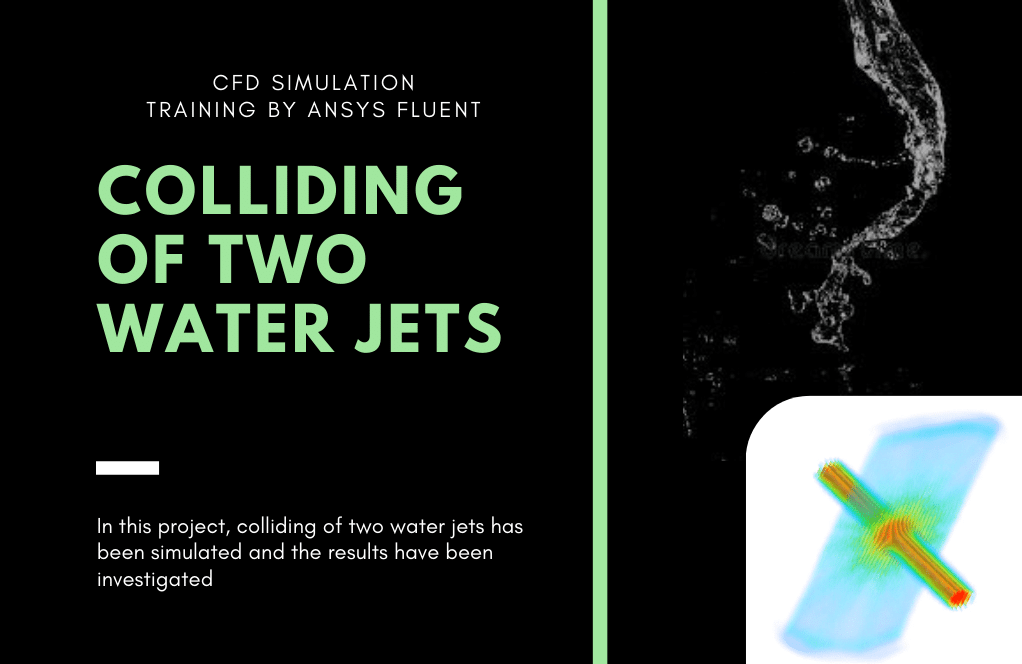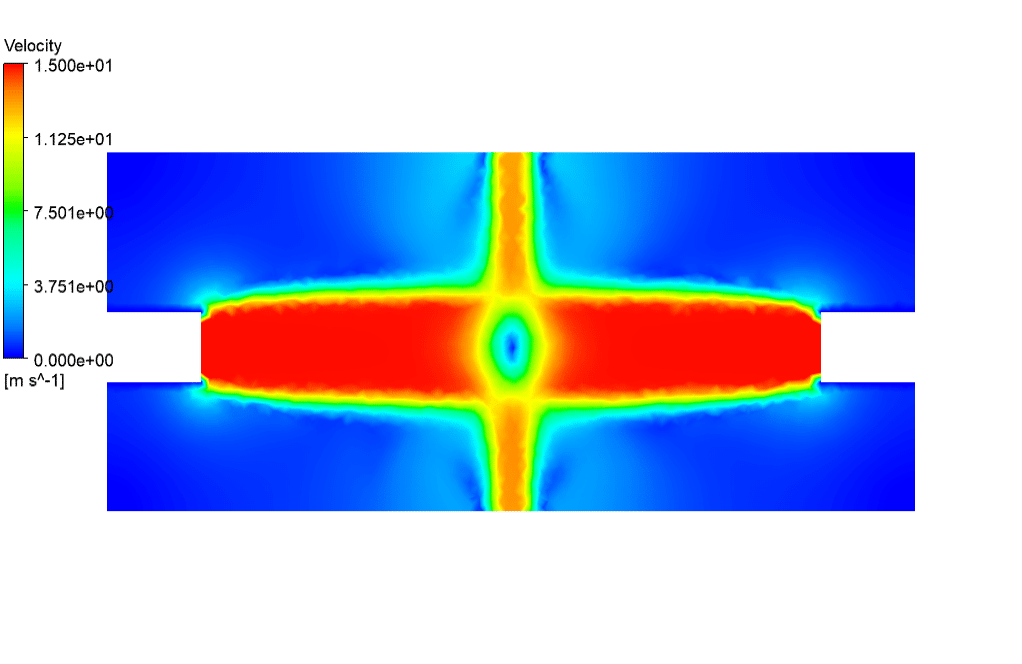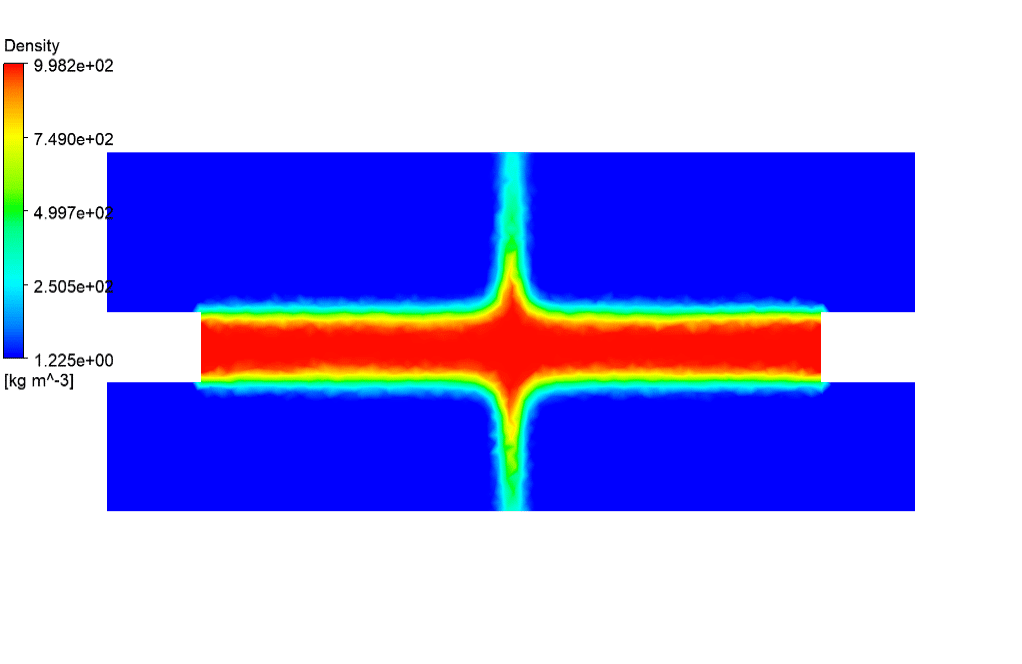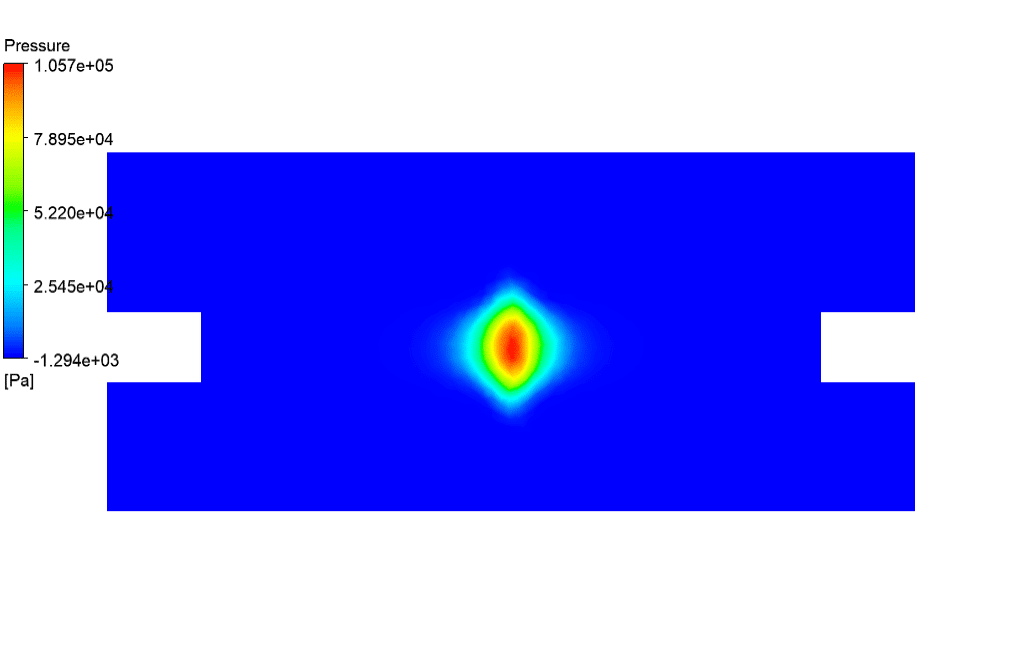Colliding of Two Water Jets CFD Simulation
$80.00 $40.00 Student Discount
In this project, colliding of two water jets has been simulated and the results have been investigated.
Click on Add To Cart and obtain the Geometry file, Mesh file, and a Comprehensive ANSYS Fluent Training Video.To Order Your Project or benefit from a CFD consultation, contact our experts via email (info@mr-cfd.com), online support tab, or WhatsApp at +44 7443 197273.
There are some Free Products to check our service quality.
If you want the training video in another language instead of English, ask it via info@mr-cfd.com after you buy the product.
Description
Colliding of Two Water Jets CFD Simulation, Ansys Fluent CFD Simulation Training
The system consists of two different fluids, including air as the primary fluid and one secondary fluid as liquid water. The Eulerian multiphase model has been used to simulate the Colliding of Two Water Jets. The water enters the domain with a speed of 15m/s with gravity considered as -9.81 m/s-2 on the y-axis.
Geometry & Mesh
The 3-D domain of this simulation has been designed in ANSYS Design Modeler. Domain has to inlet as jet flow entrance and sides as an outlet; also, pipe side is wall boundary,
The meshing of this present model has been generated by ANSYS Meshing software. The mesh grid is unstructured, and the total cell number is 872642.
Colliding of Two Water Jets CFD Simulation
To simulate the present model, several assumptions are considered, which are:
- The solver is pressure-based.
- Simulation has only examined fluid behavior; in other words, heat transfer simulation has not been performed.
- The effect of gravity on the flow is considered to be 9.81 m.s-2 and along with the y-axis in the present model.
The following is a summary of the steps for defining the problem and its solution:
| Models | ||
| K-omega | Viscous model | |
| SST | k-omega model | |
| shear flow corrections | k-omega options | |
| air | primary phase | |
| water | secondary phase | |
| explicit | formulation | |
| Boundary conditions | ||
| Velocity-inlet | inlet | |
| 0 | initial gauge pressure | mixture |
| 15 m/s | velocity magnitude | water |
| 1 | volume fraction | |
| Pressure outlet | outlet | |
| 1 | backflow volume fraction | air |
| 0 | backflow volume fraction | water |
| wall | wall | |
| stationary wall | wall motion | |
| Solution Methods | ||
| Phase coupled | pressure-velocity coupling | |
| PRESTO! | pressure | |
| first-order upwind | momentum | |
| first-order upwind | specific dissipation rate | |
| first-order upwind | volume fraction | |
| Initialization | ||
| standard | initialization method | |
| 8 m/s | water velocity (0,y,0) | |
| 15 m/s | air velocity (x,y,z) | |
| 1 | the secondary phase volume fraction | |
Colliding of Two Water Jets Results
Two high-speed water jet flows start to flow from pipes and begin to move toward each other; after jets reach each other, the impact sum of velocity magnitude becomes zero, and water splashes to sides.
At the end of the solution process, two-dimensional and 3-D animation and counters of velocity, air, and water volume fraction are obtained.
You can obtain Geometry & Mesh file and a comprehensive Training Movie that presents how to solve the problem and extract all desired results.











Davion Towne –
The training material looks comprehensive. It was fun watching the colliding jets and seeing how the forces interact in the simulation! The dynamic visualization provided a fantastic way to grasp the flow behavior.
MR CFD Support –
Thank you for your positive feedback on the Colliding of Two Water Jets CFD Simulation! We’re delighted to hear you enjoyed the visualization and found it informative. Understanding complex flow interactions is much easier with dynamic simulations, and we’re glad our product assisted in your learning process.
Phyllis Labadie PhD –
What a fascinating project! The use of multiphase modeling to simulate the collision of two water jets is extremely interesting, and it sounds like the CFD Simulation Training package offered thorough guidance on the setup and solution process. Mastering such a complex interaction between fluids using Ansys Fluent can offer invaluable insights for various engineering applications.
MR CFD Support –
Thank you for your kind words! We’re thrilled to hear that you appreciate the complexity and detail of our Colliding of Two Water Jets CFD Simulation Training. At MR CFD, we aim to provide comprehensive learning experiences that empower users to tackle advanced simulations with confidence. Thank you for choosing our products, and we look forward to continuing to support your learning journey with our simulations.
Wilton O’Reilly –
Just finished going through the Colliding of Two Water Jets CFD Simulation course. The complexity of the physics involved with dual jet collision was well-illustrated, and the step by step procedure using Ansys Fluent made it easier to follow. Although the simulation only focused on fluid behavior without heat transfer, it was a thorough understanding of the dynamic between different phases within a flow.
MR CFD Support –
Thank you for your positive feedback! We’re pleased to hear that our tutorial on the Colliding of Two Water Jets CFD Simulation was helpful and provided you with the insightful learning experience you were looking for. Our main goal is to make complex simulations more understandable through step-by-step guidance. It’s rewarding to know it met your expectations.
Dr. Nathanial Haley –
This product was very helpful for learning how to simulate colliding jets. The detailed steps and clear assumptions helped me to understand the physical model and the computational setup thoroughly. The explicit instruction on setting boundary conditions and solution methods paved the way for preparing a precise replication of the natural phenomenon of fluid collision.
MR CFD Support –
Thank you for your positive review! We’re incredibly pleased to hear that our training product contributed to your understanding of colliding jet simulations. Your successful application of the knowledge learned is the outcome we strive for. Keep experimenting and learning, and do not hesitate to reach out for more resources!
Ayana Dickinson –
I’m very impressed with the detail of the simulation results for the Colliding of Two Water Jets. It’s intriguing to see how the water jets behave upon impact and how the surrounding air is affected. Well done on a thorough analysis and clear presentation of findings.
MR CFD Support –
Thank you for your kind words! We’re glad you found the simulation detailed and the results enlightening. If you have any further questions or need more clarification on any aspect of the trainings we provide, feel free to reach out to us.
Prof. Elda McKenzie –
I followed the training and your guidelines on setting up the CFD simulation for the colliding water jets. The animations and contours at the end beautifully visualized the physics. Great learning experience!
MR CFD Support –
Thank you for your positive feedback! We’re thrilled to hear that our guidelines and training helped you successfully set up the CFD simulation, and that you found the animations and results insightful. If you need further assistance or have any questions in the future, please feel free to reach out.
Edna Trantow –
The description of the CFD simulation of the colliding water jets is really comprehensive! The attention to detail from the meshing process to the results presentation is fantastic, and it’s great to see that a variety of boundary conditions and solver methods were applied effectively.
MR CFD Support –
We appreciate your positive feedback! It’s wonderful to know our detailed approach in the simulation process facilitated a clear understanding and valuable insights. If you have any further queries or need more in-depth guidance, please feel free to reach out.
Lora Stark IV –
The tutorial really helped me understand the Eulerian multiphase model. However, could you clarify whether any wall treatment was applied in the simulation to account for the fluid’s interaction with the pipe walls?
MR CFD Support –
In this simulation, a ‘stationary wall’ boundary condition is used to model the fluid’s interaction with the pipe walls. This means that the walls are treated as immovable surfaces that interact with the fluid flow. The mesh is refined near the walls to accurately capture the flow dynamics and wall effects.
Miss Velma Crist –
I am thrilled with the clear explanation of the setup and results of the Colliding of Two Water Jets simulation. The detailed outline of the CFD Simulation made it easy for me to follow and understand how the impact of the water jets results in the water splashing to the sides. The concurrent use of a visual aid through the comprehensive training movie is exceptional for grasping the flow dynamics. Great job on providing an engaging and educational resource!
MR CFD Support –
Thank you so much for your kind words! We are very glad to hear that our Colliding of Two Water Jets simulation and its accompanying training materials were helpful and easy to understand. It’s always our goal to support learning and make complex concepts more accessible. Your feedback is greatly appreciated and motivates us to continue producing quality content.
Yasmeen Jenkins –
I’m thrilled with how effectively the simulation demonstrated the physics of jet collision! The animations were particularly helpful in visualizing flow dynamics. Great job!
MR CFD Support –
Thank you for your kind words! We’re glad our simulation on the colliding of two water jets in ANSYS Fluent helped you to visualize the complex flow dynamics effectively. It’s always our aim to deliver clear and informative content, and we appreciate your feedback. If you need further assistance or have more questions in the future, please feel free to reach out to us.
Candice Legros Jr. –
Just wanted to express how amazed I am with the comprehensive nature of the Colliding of Two Water Jets CFD Simulation training material. I could see every step of the simulation clearly. Fantastic material for anyone trying to understand fluid dynamics simulations in detail. I didn’t just watch, I learned so much!
MR CFD Support –
Thank you for such wonderful feedback! We are delighted to hear that our training material on the Colliding of Two Water Jets CFD Simulation has helped you in understanding fluid dynamics simulations. Your satisfaction is our top priority and we always strive to provide comprehensive and clear learning resources. If you have any more questions or require further assistance in your learning journey, don’t hesitate to reach out.
Prof. Ben Mosciski –
I ran the Colliding of Two Water Jets simulation, and the visuals were impressive. Everything moved smoothly, and the results were easy to interpret. Fantastic job on the modeling aspects and the detailed output!
MR CFD Support –
Thank you for your kind feedback! We are delighted that you had a positive experience with the simulation and found the results satisfactorily clear and helpful for your understanding. If you have any more questions or need further assistance, feel free to contact us.